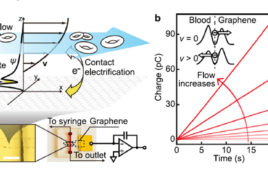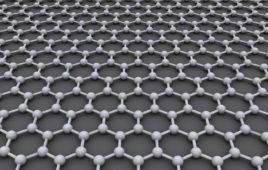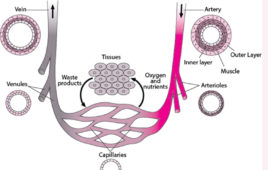An international team of physicists and chemists, headed by Eugenio Coronado and Guillermo Mínguez Espallargas, researchers of Valencia University’s Molecular Science Institute (ICMol) have been able to create materials similar to graphene from a molecular synthesis. These are MUV-1, robust materials with great chemical versatility that are capable of having different physical properties such as magnetism.
Results of the research have been published in Nature Chemistry (“Isoreticular two-dimensional magnetic coordination polymers prepared through pre-synthetic ligand functionalization”).
Different bidimensional metallic-organic materials have been designed in this project — the MUV-1, or Materials of the University of Valencia — from a molecular synthesis. Unlike with graphene and other bidimensional materials, this new synthesis makes it possible to modify the surface’s properties at will, changing it for example from hydrophobic to hydrophilic, or adding physical properties such as magnetism, which are complicated to insert.
The study opens the possibility to integrate and apply these materials in different technological areas such as nanoelectronics and spintronics, or to the development of ultrasensitive molecular sensors, which can recognize and selectively detect certain molecules.
Since the discovery of graphene — the first bidimensional material comprised of a layer of carbon atoms — numerous inorganic bidimensional materials have been created. One of the problems of said materials is that it is not possible to modify their properties by anchoring the molecules of its surface, which blocks the addition of new properties or the improvement of its processability.
Furthermore, the study of magnetism in bidimensional materials of an inorganic nature known to date represents a scientific challenge, as they are all chemically unstable in environmental conditions.
The new molecular synthesis of bidimensional materials that the ICMol proposes to the international scientific community offers solutions to both problems. On one hand, the possibility to functionalize these 2D materials at will makes it possible to easily alter their properties, making them hydrophobic or hydrophilic, for example.
Said processability, added to the fact that the MUV-1 have mechanical and chemical stability, has allowed scientists to build membranes based on these materials and isolate the first magnetic monolayers based on coordination chemistry.
The international group that has developed this research is comprised of scientists from seven European institutions — ICMol of Valencia, Institute of Chemical Technology of Valencia’s Polytechnic University, Spanish National Research Council, University of Manchester (United Kingdom), Laue Langevin Institute of Grenoble (France), University of Lisbon (Portugal), and Technologic University of Delft (Netherlands).
The Valencia University team, which heads the work, is comprised of Javier López Cabrelles, Samuel Mañas Valero, Guillermo Mínguez Espallargas, and Eugenio Coronado.
Source: Asociación RUVID




